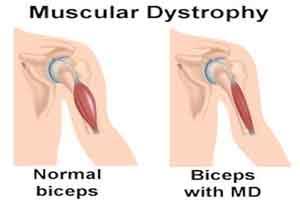- Home
- Medical news & Guidelines
- Anesthesiology
- Cardiology and CTVS
- Critical Care
- Dentistry
- Dermatology
- Diabetes and Endocrinology
- ENT
- Gastroenterology
- Medicine
- Nephrology
- Neurology
- Obstretics-Gynaecology
- Oncology
- Ophthalmology
- Orthopaedics
- Pediatrics-Neonatology
- Psychiatry
- Pulmonology
- Radiology
- Surgery
- Urology
- Laboratory Medicine
- Diet
- Nursing
- Paramedical
- Physiotherapy
- Health news
- Fact Check
- Bone Health Fact Check
- Brain Health Fact Check
- Cancer Related Fact Check
- Child Care Fact Check
- Dental and oral health fact check
- Diabetes and metabolic health fact check
- Diet and Nutrition Fact Check
- Eye and ENT Care Fact Check
- Fitness fact check
- Gut health fact check
- Heart health fact check
- Kidney health fact check
- Medical education fact check
- Men's health fact check
- Respiratory fact check
- Skin and hair care fact check
- Vaccine and Immunization fact check
- Women's health fact check
- AYUSH
- State News
- Andaman and Nicobar Islands
- Andhra Pradesh
- Arunachal Pradesh
- Assam
- Bihar
- Chandigarh
- Chattisgarh
- Dadra and Nagar Haveli
- Daman and Diu
- Delhi
- Goa
- Gujarat
- Haryana
- Himachal Pradesh
- Jammu & Kashmir
- Jharkhand
- Karnataka
- Kerala
- Ladakh
- Lakshadweep
- Madhya Pradesh
- Maharashtra
- Manipur
- Meghalaya
- Mizoram
- Nagaland
- Odisha
- Puducherry
- Punjab
- Rajasthan
- Sikkim
- Tamil Nadu
- Telangana
- Tripura
- Uttar Pradesh
- Uttrakhand
- West Bengal
- Medical Education
- Industry
Gene editing tool to help treat muscular dystrophy

WASHINGTON: Scientists, including one of Indian-origin, have successfully used a gene editing tool to treat a genetic disease in a fully developed living mammal for the first time, an advance that may be translated in humans. Researchers from Duke University used CRISPR to treat an adult mouse model of Duchenne muscular dystrophy.
They had previously used CRISPR to correct genetic mutations in cultured cells from Duchenne patients, and other labs had corrected genes in single-cell embryos in a laboratory environment. But the latter approach is currently unethical to attempt in humans, and the former faces many obstacles in delivering treated cells back to muscle tissues.
Another approach, which involves taking CRISPR directly to the affected tissues through gene therapy techniques, also faces challenges, particularly with delivery.
Researchers including Aravind Asokan of University of North Carolina, overcame several of these obstacles by using a non-pathogenic carrier called adeno-associated virus, or AAV, to deliver the gene-editing system.
They had previously used CRISPR to correct genetic mutations in cultured cells from Duchenne patients, and other labs had corrected genes in single-cell embryos in a laboratory environment. But the latter approach is currently unethical to attempt in humans, and the former faces many obstacles in delivering treated cells back to muscle tissues.
Another approach, which involves taking CRISPR directly to the affected tissues through gene therapy techniques, also faces challenges, particularly with delivery.
Researchers including Aravind Asokan of University of North Carolina, overcame several of these obstacles by using a non-pathogenic carrier called adeno-associated virus, or AAV, to deliver the gene-editing system.
Next Story


